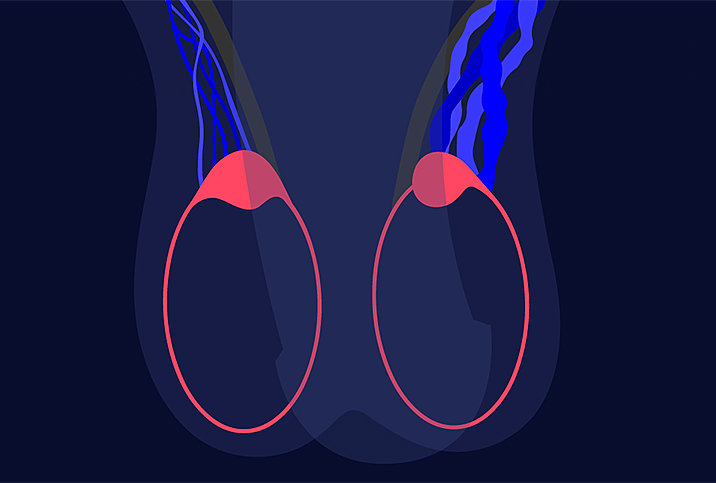Varicoceles: Myths & Misconceptions

Similar to the varicose veins that develop in the legs, a varicocele is a swelling of the veins in the scrotum, usually appearing above one or both testicles. Many men describe a varicocele as feeling like a bag of worms in their scrotum. Typically painless but sometimes uncomfortable, a varicocele is not usually life-threatening.
Even so, there are several surgical options to correct a varicocele when it's symptomatic, although it's just as often left untreated.
Check out our list of varicocele myths to see if what you've heard about the condition is true.
Myth: A varicocele is a rare condition.
Reality: A varicocele is actually rather common. Between 10 and 15 percent of men will develop a varicocele at some point in their life, along with 20 percent of adolescent boys. Between the ages of 15 and 25, that percentage may be even higher.
Adolescent boys are especially prone to varicoceles due to the massive influx of blood to the genitals during puberty. As the testicles rapidly develop, any blockage or slowdown of that increased blood flow can cause complications. High-grade varicoceles can lead to testicular atrophy and size difference as opposed to the contralateral testicle.
And given the odd appearance of a varicocele, the condition can be a cause of insecurity, especially for teens who are already dealing with the tidal wave of awkwardness that is puberty.
The truth is, varicoceles are relatively common, and while you should discuss them with your doctor, there's generally no cause for serious alarm.
Still, teens and adults should seek immediate medical attention if they notice their left testicle is becoming smaller than the right one. (The impeded blood flow back to the heart usually manifests in a varicocele above the left testicle, although it can occur in both testicles in rare cases.)
Also, talk to a doctor if the pain or discomfort does any of the following:
- Suddenly turns from dull to sharp
- Gets worse when you stand for an extended period, or during exercise
- Gets more intense over the course of the day
- Recedes when you lie down
Myth: A varicocele is always easy to diagnose.
Reality: The condition isn't always readily apparent. While you or your doctor may be able to easily see a varicocele, just as often it isn't visible. Doctors rate varicoceles on a size scale of 0 to 3: A 0 is visible only using ultrasound, while a 3 is so pronounced it changes the shape of the scrotum.
Sometimes, during a checkup for fertility issues, the doctor may have a patient with no visible varicocele perform the valsalva maneuver (a breathing technique) and bear down. The doctor then palpates the scrotum to see if the veins fill with excess blood, indicating a varicocele. Even mild cases of the condition can hinder sperm creation so don't hesitate to seek medical help if you believe you may have a varicocele.
Myth: Decreased fertility is the only complication that can arise from a varicocele.
Reality: Varicoceles can cause other issues, as well. The main concern of most men considering varicocele treatment is fertility. Some 30 to 45 percent of men with primary infertility have a varicocele, as the blood-flow blockage can impede the testicle's ability to make sperm. However, another potential complication is reduced testosterone production.
While many men live with a varicocele and show no reduction in testosterone levels, sometimes it can cause severely low levels of the male hormone. That can lead to associated complications like metabolic syndrome, osteoporosis and diabetes.
Myth: A varicocele is never dangerous.
Reality: Sometimes, a varicocele can be indicative of a much more dire issue. A varicocele usually forms on the left side, due to the way blood circulates. However, if a varicocele forms on the right side, it's possible a tumor or other mass is blocking blood flow, or a renal mass may be causing compression.
Also, a varicocele usually recedes or "reduces" to some degree when the man is lying down. If the varicocele remains the same size even when the man is lying on his back, it could indicate some type of blockage in the abdomen, again, possibly a mass or tumor.
While a varicocele is a sometimes unpleasant-looking and uncomfortable condition, it's not usually life-threatening. However, given the complications varicoceles may cause in terms of fertility, testosterone production and testicle development in adolescents, it's critical to understand how they work and consult a doctor.

















